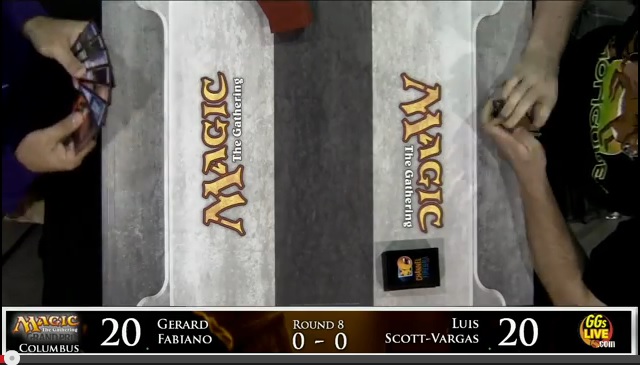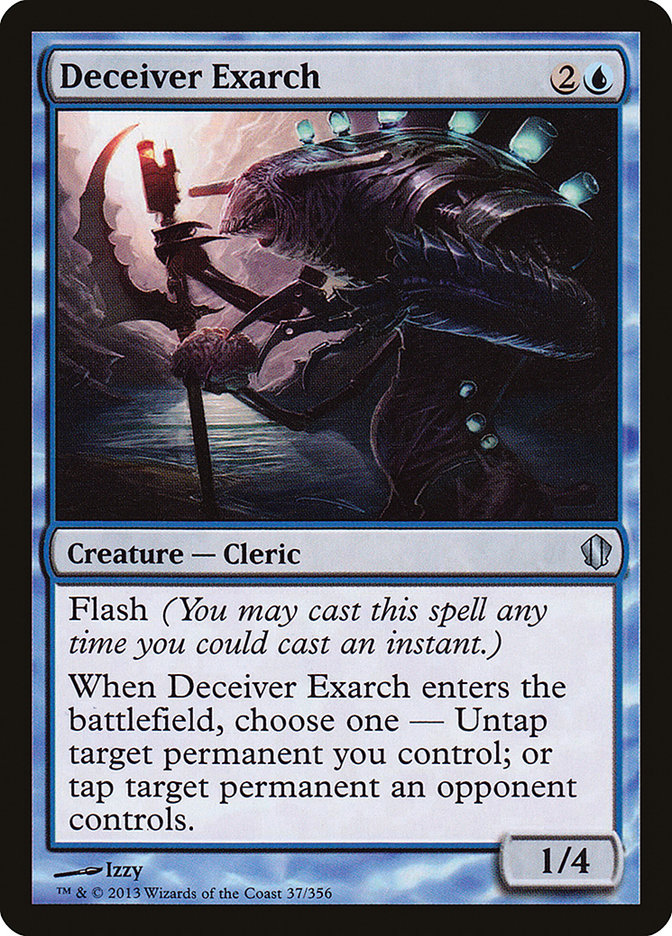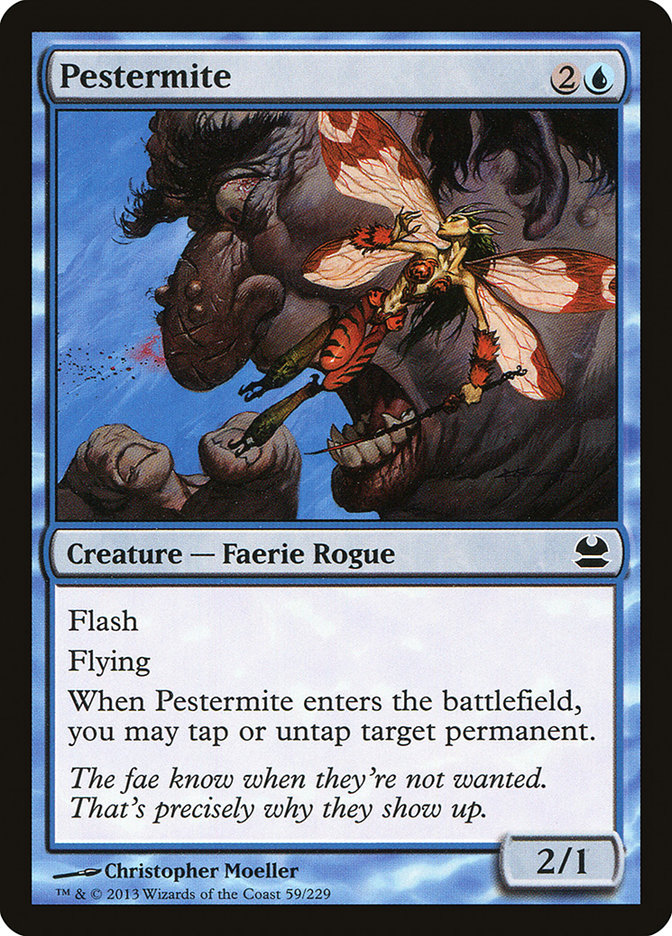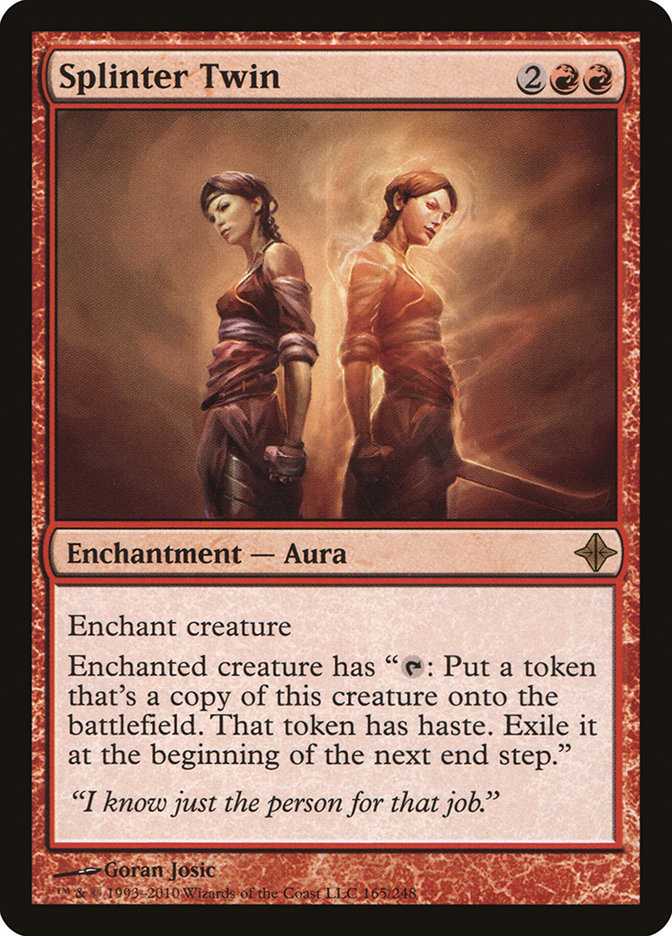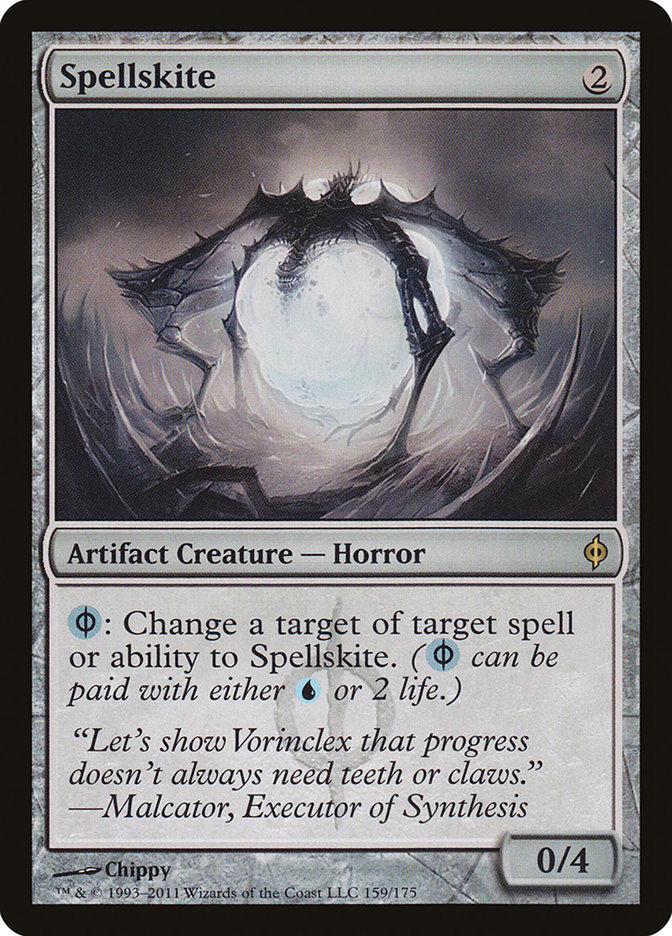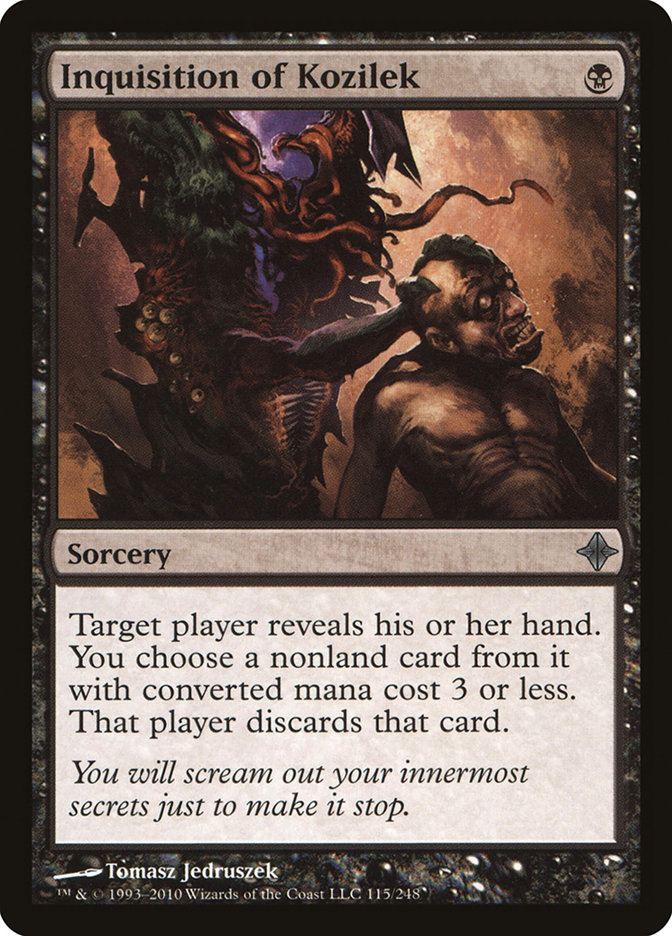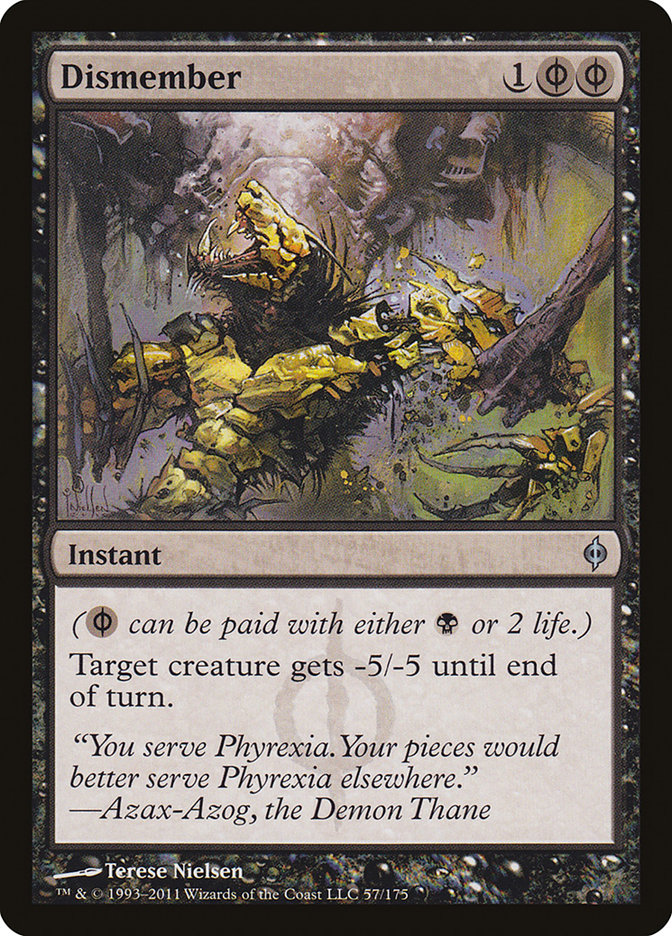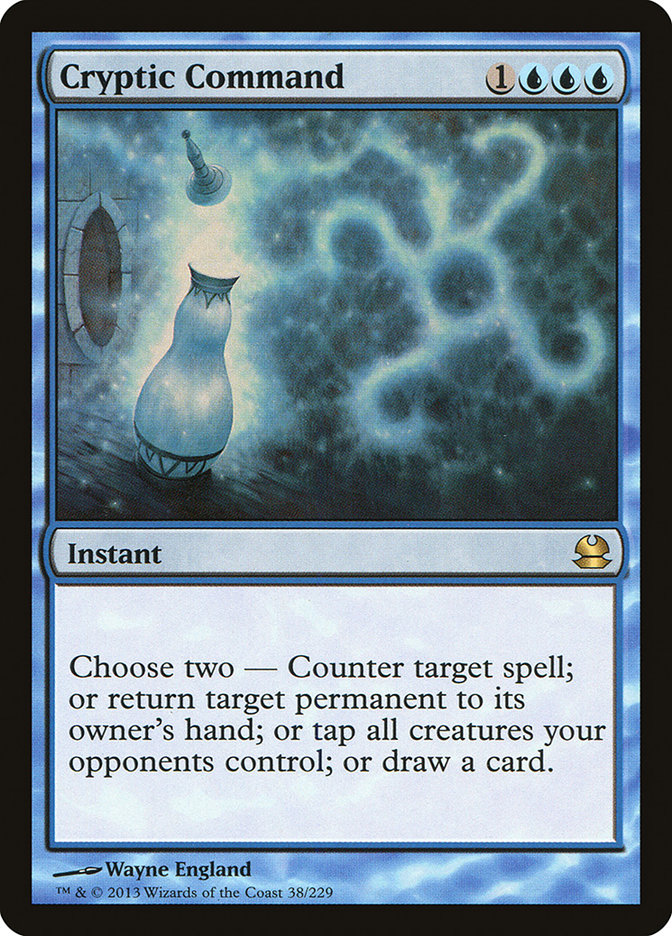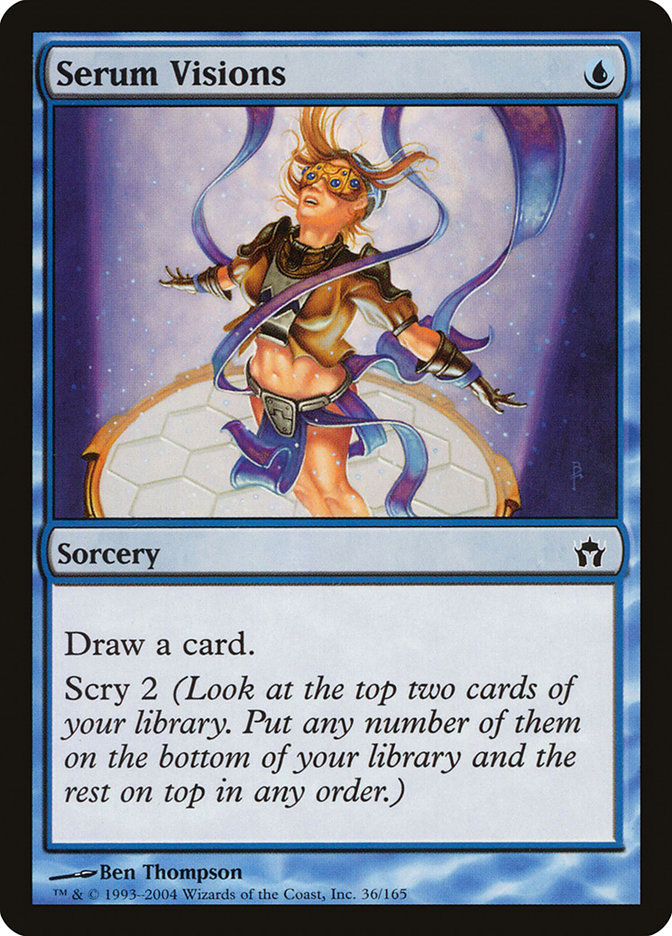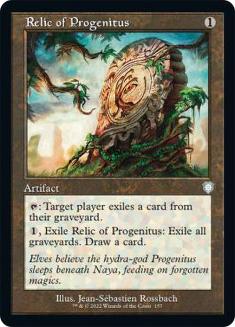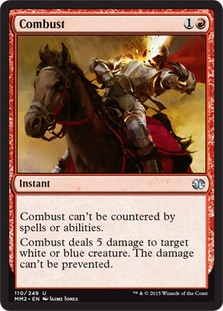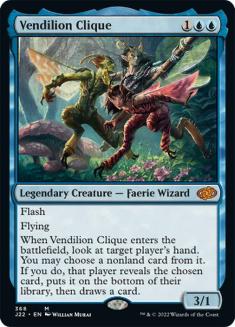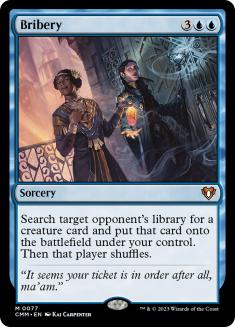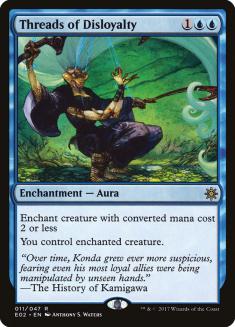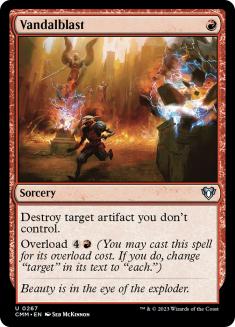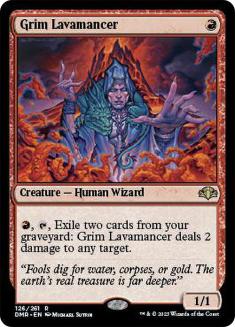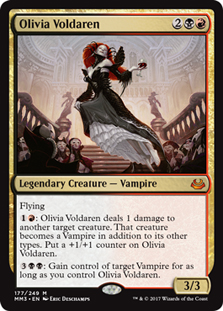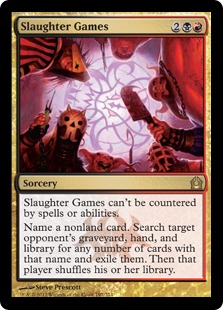“You could be the greatest, you can be the best, you can play Grixis Twin and beat the rest!”
If you are reading this and you’re still unsure on what to play for Grand Prix Richmond, don’t worry! All you’ll have to do is scroll down, read the article, and win the Grand Prix with Grixis Twin!!!
Modern is an interesting format. I remember the first time I played it was back in early 2012. I was away from Magic for a few months in 2011 when Modern was hyping up and players were getting ready for Pro Tour Philadelphia. I didn’t really care too much about the format at that time, as I was busy doing the Truth Tour.
Once that was all said and done, I got back into the swing of things with Magic. However, Modern wasn’t all that relevant to me until I showed up to a PTQ in New Jersey sometime in early 2012, and won it with a deck that was handed to me that day by Josh McGhee. The deck you might ask?
RUG Delver.
After that Grand Prix Columbus came along in the summer, and I showed up ready to game. I discussed the format with Reid Duke and Ben Lundquist. I talked things over with both of them and we decided that RUG Delver would be a perfect fit for me especially because of the sideboard plan of Blood Moon. Catching my opponents off guard is something I’m very much a fan of and since RUG Delver was an aggressive deck that could also take on a control route, I felt it fit my play style.
Besides that, I was happy to be playing very powerful cards and arguably one of my favorite spells in the format, Cryptic Command. Looking back on the tournament, I realized that Modern is a very skill intensive format with many decisions. Take a look at my match below against Hall of Famer Luis Scott-Vargas. You’ll see many tough decisions from both sides and how cards that attack from different angles are often game changing.
Blood Moon was one of the most important cards in that matchup, and it pulled a ton of weight for the entire tournament as well, quickly becoming one of my favorite cards to play. Oddly enough, for Grand Prix Richmond I am suggesting that you not play with Blood Moon because many people will be ready to play against it.
Instead, I suggest you play Grixis Twin!
Creatures (12)
Lands (17)
Spells (31)

Personally, I have never been a fan of playing pure control decks. I enjoy interacting with my opponent’s game plan by figuring out what’s important to their strategy… and then disrupting it, not controlling the game outright. Splinter Twin is clearly one of the best combo decks currently floating around in Modern. It’s difficult to stop and has great supporting tools like Remand and Lightning Bolt.
However, adding black to the deck, evolves a new aspect and game strategy. You’re now able to attack their hand and clear a path, making it safe for your combo to resolve. Since the spells in Modern are both cheap and powerful, you must have cards that are just as cheap and powerful in order to keep pace with your opponent. By having access to six copies of a one-mana discard spell, you’re able to do a nice job of stopping a second-turn Birthing Pod from coming down. This in combination with six removal spells (four copies of Lightning Bolt and two copies of Dismember) allow you to take out early mana accelerants to slow down an early Birthing Pod.
The discard is not only excellent against other combo decks, it is also great against decks other Splinter Twin decks:
Creatures (14)
- 1 Kiki-Jiki, Mirror Breaker
- 2 Pestermite
- 2 Vendilion Clique
- 1 Spellskite
- 4 Deceiver Exarch
- 4 Snapcaster Mage
Lands (16)
Spells (30)

Both lists are very similar, however with the addition of black you’re able to play more cards that are both powerful and have diverse uses in a wide-open format. Sure, having more consistent mana may have its appeal, but when taking a closer look at it you will find out that the mana isn’t much worse.
You can also see some small differences on other card choices. Electrolyze doesn’t feel all that great as most of the time you are just cycling it to draw a card, with the damage being somewhat irrelevant since your plan is to attack for infinite. The one copy of Dispel is nice, but isn’t really needed when you have access to two of the best discard spells ever printed. Besides adding black for the discard effects and sideboard plan, being able to add Dismember to your deck and still being able to cast it for its alternate casting cost of 1BB is also something very nice for the deck. If you take a look at the metagame, being able to kill four- or five-toughness creatures is something you want to be able to do.
The Maindeck
Now that you understand the reasons for black, let’s take a look at composition of the maindeck.
4 Deceiver Exarch, 2 Pestermite, 4 Splinter Twin
The 4/2 split in favor of Deceiver Exarch is nothing really new, but definitely comes down to player preference. Deceiver Exarch is nice because it dodges Lightning Bolt, Electrolyze, and Lightning Helix – and it also lives through our Anger of the Gods when we opt to sideboard that in. However, some players prefer Pestermite since it is a two-power flyer… if you’re forced to go the beatdown route, Pestermite does a much better job at it.
4 Snapcaster Mage
Snapcaster Mage is already excellent in U/R Twin, and becomes even better here when you add it alongside cheap discard spells. Once you play this deck, you’ll realize how easy it is to rip apart your opponent’s hand and destroy everything they play, leaving them with nearly no resources to do anything. Snapcaster Mage also helps once you board into a more midrange shell because having a creature to flash in during your opponent’s end step before equipping a Sword is devastating. There are even games where you are able to chain Snapcaster Mages together by hitting with Sword of Light and Shadow and returning another Snapcaster Mage to your hand.
2 Spellskite
In Valencia, the number of Spellskites in Twin decks varied greatly. The way the metagame has been shaping up, I feel two is the appropriate number. The obvious upside is that Spellskite helps you force your combo through and also plays as an early defender. The one small interaction that might get overlooked is that Spellskite can actually wear a Sword in sideboarded games and get into the red zone.
4 Inquisition of Kozilek, 2 Thoughtseize
As mentioned earlier, these discard spells are vital to the deck’s gameplan. They disrupt your opponent while clearing the way for your combo, and can both blunt an aggressive draw and render an opponent defenseless against your combo. Since the format is full of cheap and efficient threats, Inquisition does a great Thoughtseize impersonation without having to pay two life, which can be more like five on the first turn in this format. There will be some cards that you miss on (Splinter Twin, Cryptic Command, and Birthing Pod are all notable here) but you will almost always have a solid target to hit with it.
2 Dismember, 4 Lightning Bolt
Many of the Twin decks at the Pro Tour were playing some number of Flame Slash, but adding black to your deck opens up your removal options. Dismember isn’t even necessarily a black card, but since you do have access to black sources in your deck and there is no maindeck life gain, you do need to be careful to spend too much life on your spells over the course of a game. Dismember is great because it can hit creatures that Lightning Bolt cannot, and unlike Flame Slash it still does that at instant speed. Being able to take out a Celestial Colonnade, Restoration Angel, and other Deceiver Exarchs is very important.
2 Cryptic Command, 4 Remand, 4 Serum Visions
All of these cards are needed so the deck can run smoothly. Ideally, I would want to play four copies of Cryptic Command… but because this is a three-color deck and the format is very fast, you can only afford to play two. Serum Visions isn’t as good as Preordain or Ponder, but combined with Snapcaster Mage and Remand you’re able to filter past duplicate combo pieces or any cards that aren’t needed at the moment in order to get to exactly what you want.
The Sideboard
The sideboard is one of my favorite parts of the deck. Since you’re able to board into a completely different shell, your opponents will be unaware of what to expect which will give you a huge advantage in almost any matchup. Ashiok, Nightmare Weaver is a card that is being heavily underplayed in all formats. In Modern, and this deck specifically, Ashiok allows you to pressure your opponent from a completely different angle.
Against Birthing Pod decks, you can often catch important creatures from their library and then use those creatures against them. Since most of their creatures are aggressively-costed, whatever you hit is very likely to come down the next turn. Ashiok also shines in some control and combo match-ups, since you are able to attack their valuable cards while threatening the Ultimate ability.
Another aspect to the sideboard that I’ve liked is the combination of Bitterblossom and Sword of Light and Shadow. Bitterblossom is a very unique threat that has to be handled differently than just another creature would be. Your opponent might be ready with a fistful of Path to Exiles or a Linvala, Keeper of Silence but both of those do very little against our alternate sideboard plan. Other than the additional discard spells and Batterskull, you pretty much have everything you need for a full-on midrange Grixis deck that is able to compete against any of the decks you might anticipate facing this weekend.
Having the option to surprise your opponent, widen your range of attack, and play powerful cards that disrupt a range of opponents is something you want to have in your arsenal. There are a handful of other cards you can consider boarding into depending on what you might run up against. That list includes just some of the following:
The list of options could go on and on, so feel free to add any cards you think might be great for the sideboard that I may have overlooked. You can even pull a complete surprise with a Ravnica dual land and a powerful hoser of another color thanks to the strength of the manabase – white has some of the most powerful sideboard cards out there, so if you want to be ready for something and Grixis doesn’t cover your needs, the deck can still be built to handle it if necessary with just a little bit of creative stretching of the existing boundaries. I look forward to hearing your thoughts in the forums below, and I strongly suggest you give the deck a try for Grand Prix Richmond.


